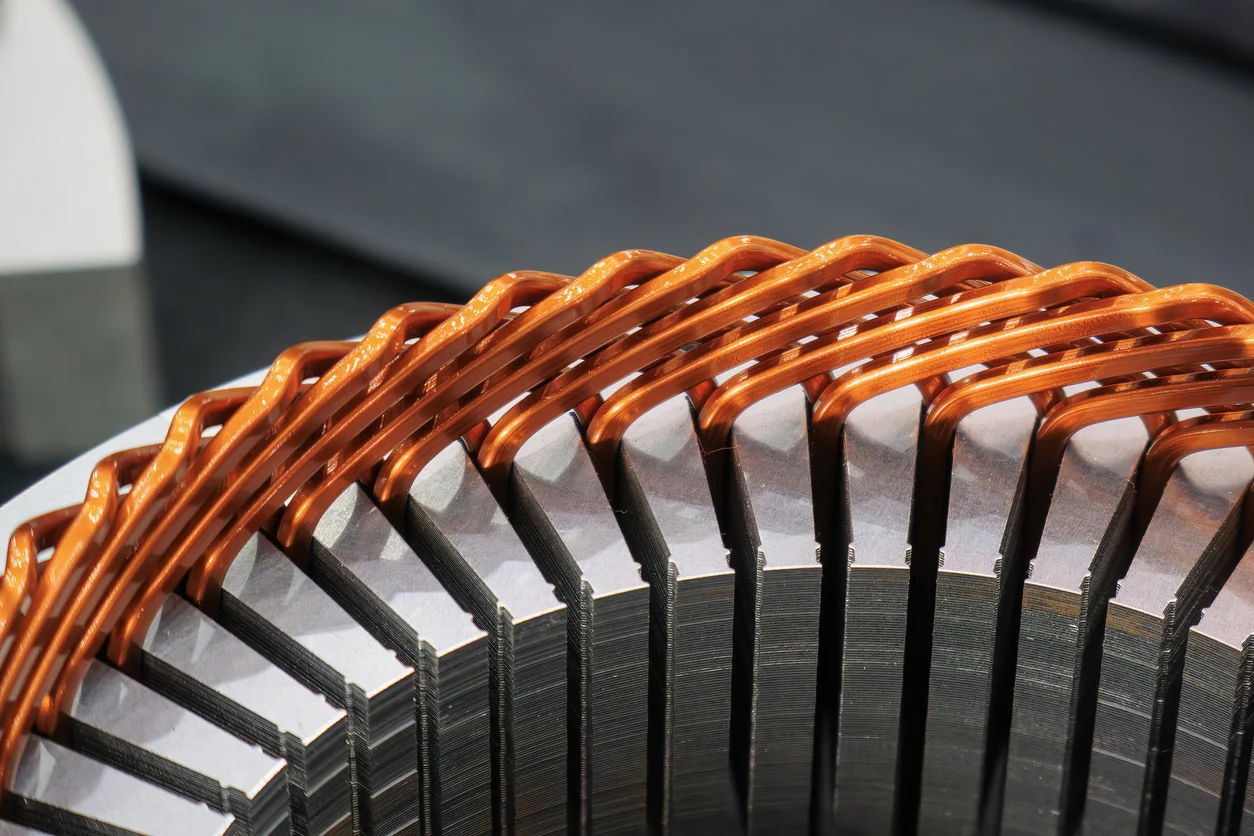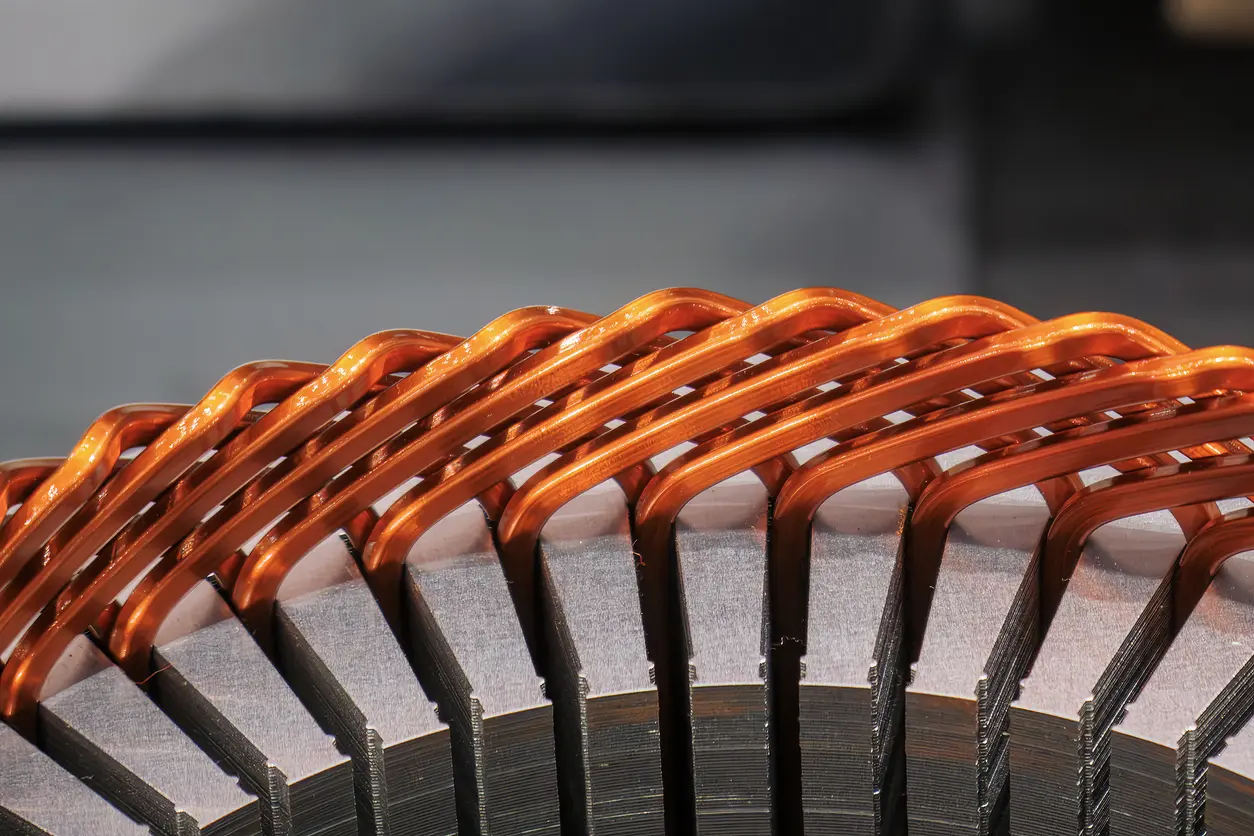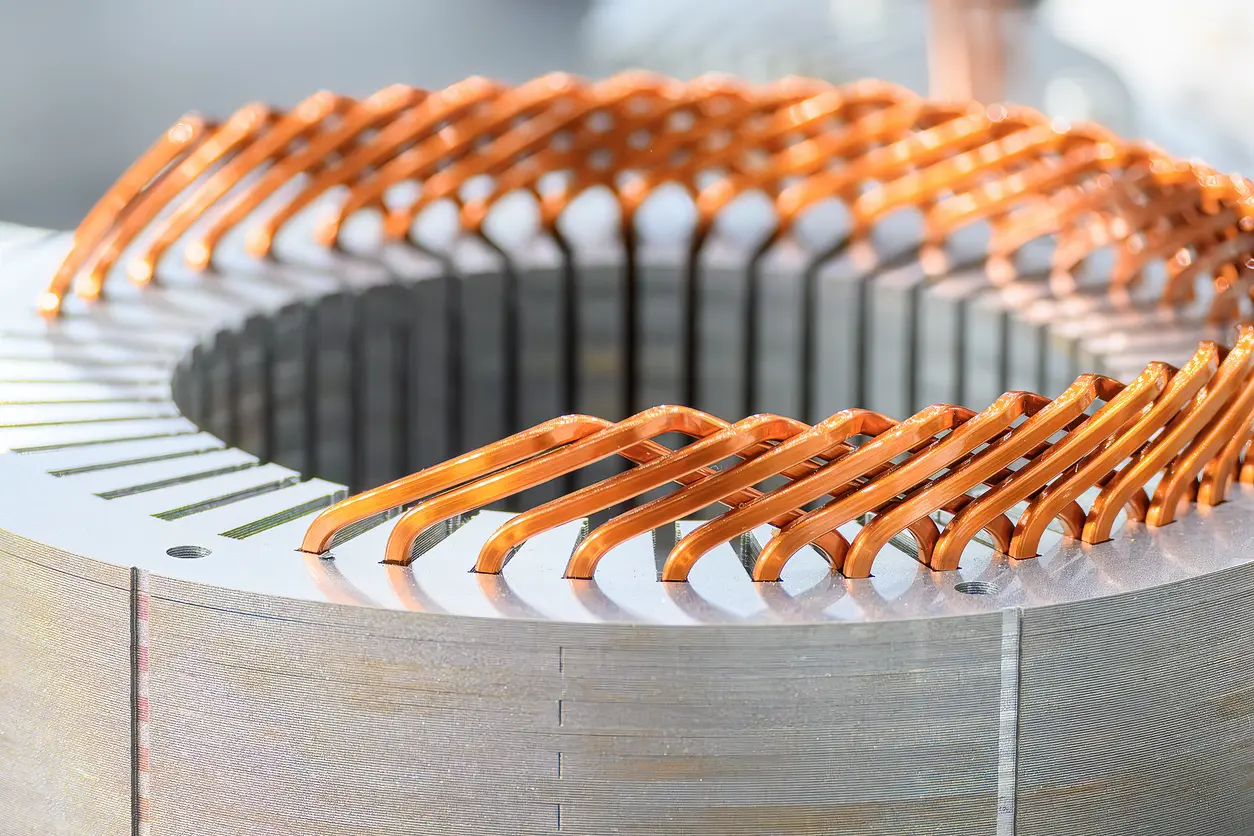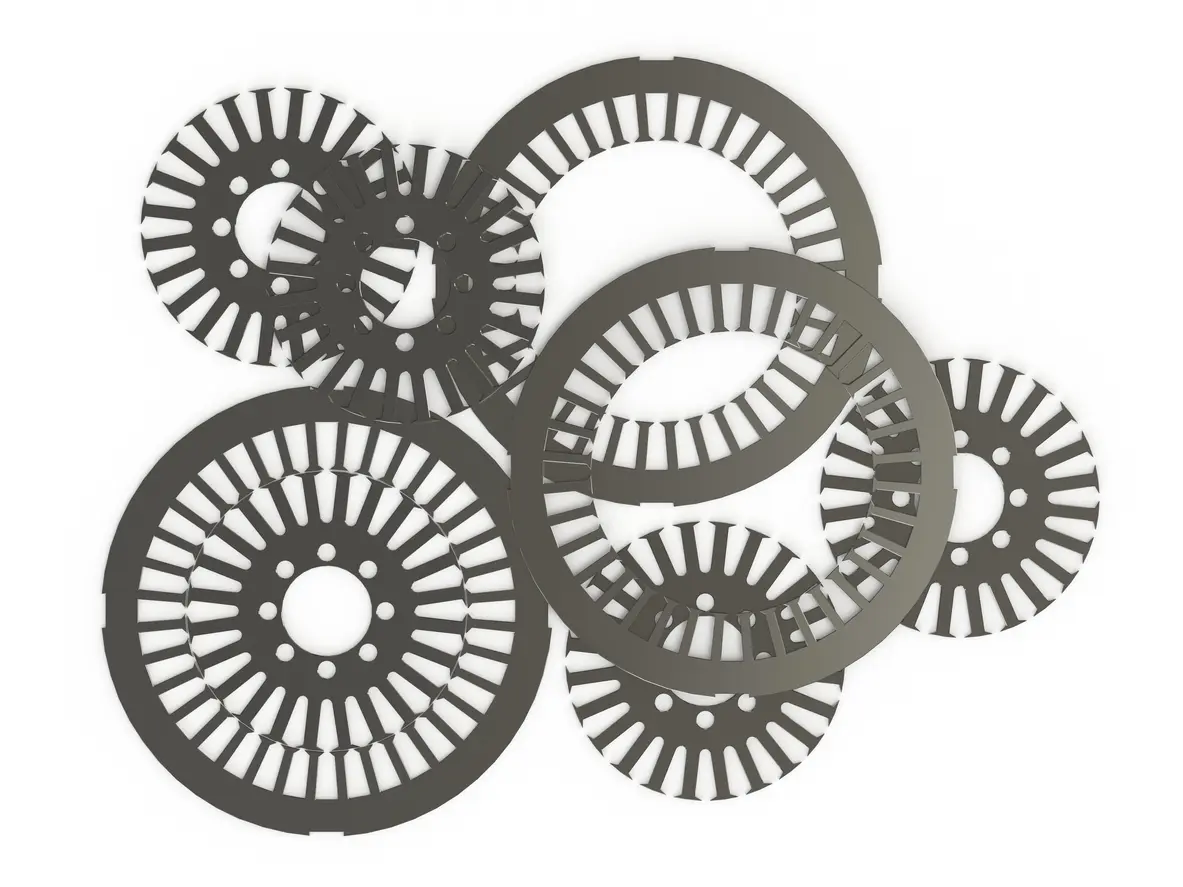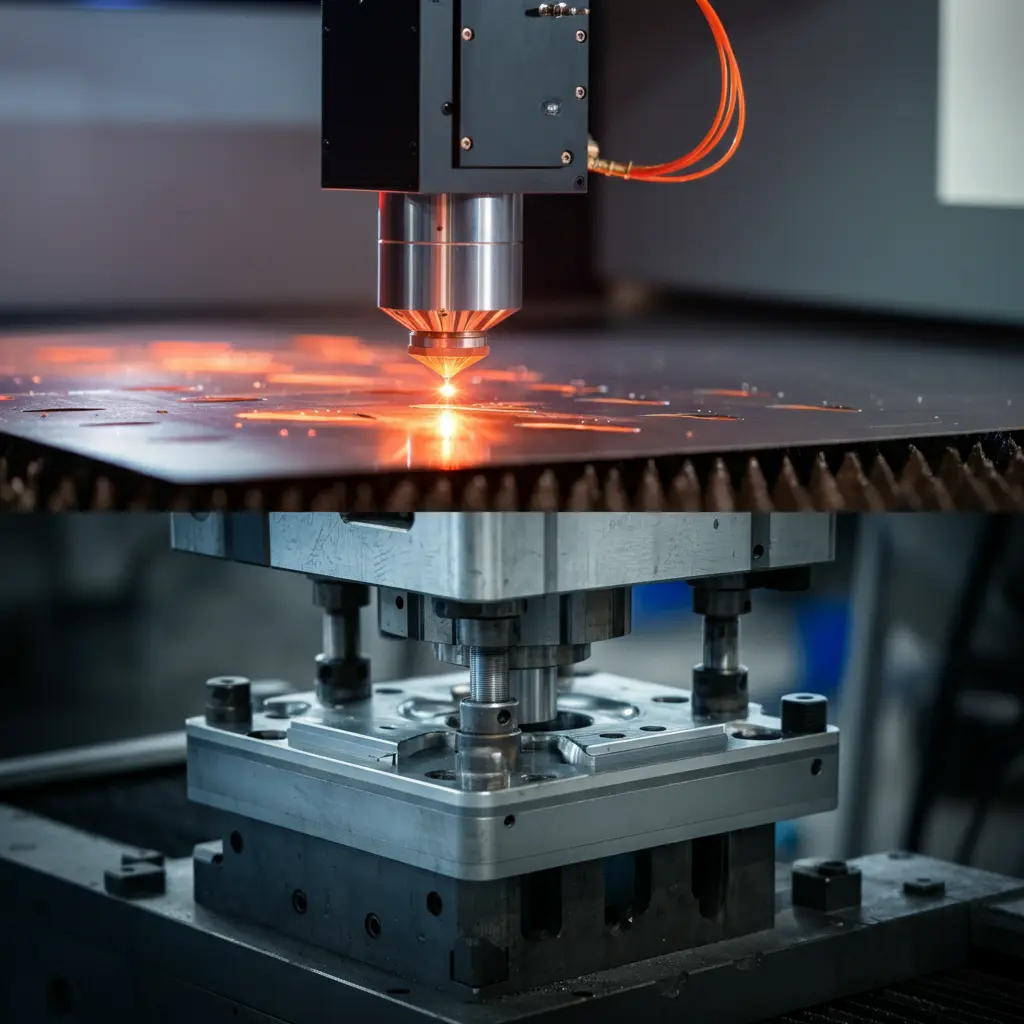Table of Contents
Introduction
The landscape of electric motor manufacturing is witnessing a paradigm shift as self-bonding techniques transition from experimental development to mature, mass-production-ready solutions. For decades, riveting has dominated as the conventional bonding method for motor core laminations, employing a straightforward approach where small rectangular tabs are punched into each laminated steel sheet during progressive die processing. While this mechanical interlocking method has served the industry reliably, it comes with inherent limitations that modern high-performance applications can no longer afford to overlook.
Self-bonding techniques represent a revolutionary departure from traditional methods, eliminating both riveting and welding processes entirely. Instead, these advanced solutions rely on specialized adhesive coatings pre-applied to silicon steel sheets, creating robust bonds through heat activation during the stacking process. This fundamental change in approach delivers transformative results for motor manufacturers seeking optimal performance.
In high-performance motor cores, self-bonding techniques offer three critical advantages that directly impact motor efficiency and reliability: superior structural integrity that enhances mechanical stability, preservation of pristine magnetic properties throughout the core structure, and significantly lower iron core losses that translate to improved energy efficiency. These benefits position self-bonding as the preferred solution for next-generation electric motors demanding peak performance.
1. Superior Structural Integrity: Building Robust Motor Cores for Demanding Applications
Self-bonding techniques achieve remarkable bonding strength, with laboratory tests demonstrating adhesive bond strengths reaching 3.3 MPa across the lamination interfaces. This uniform distribution of bonding force fundamentally outperforms traditional riveting methods in maintaining structural cohesion under extreme operating conditions.
The elimination of punched rectangular riveting points proves particularly crucial for high-speed motor applications. Traditional riveted cores face significant vulnerabilities at these mechanical connection points, where stress concentrations during high-RPM operation can lead to cracking or even catastrophic disassembly of the lamination stack over time. Self-bonding techniques eliminate these weak points entirely, creating a homogeneous structure capable of withstanding intense centrifugal forces.
Furthermore, the inherent mechanical weakness of riveted connections manifests as increased acoustic emissions during operation. The localized stress points and potential micro-movements between laminations in riveted cores generate higher decibel levels, particularly noticeable at elevated rotational speeds. Self-bonded cores, with their continuous adhesive interface, dramatically reduce operational noise through superior vibration dampening.
Perhaps most critically, riveting methods inherently destroy portions of the lamination bonding surface where the tabs are punched and deformed. This mechanical disruption reduces the effective contact area between laminations, compromising the overall structural integrity of the motor core assembly.
2. Preservation of Pristine Magnetic Properties Throughout the Core Structure
The magnetic performance of motor cores depends critically on maintaining electrical isolation between individual lamination sheets. Traditional riveting methods pose a significant threat to this isolation, as the mechanical punching and deformation process inevitably damages the insulating coating on electrical steel sheets at riveting points. This localized destruction creates potential short-circuit paths between adjacent laminations, fundamentally undermining the core’s electromagnetic design.
These inter-lamination shorts have cascading effects on motor performance. When eddy currents flow between sheets through damaged insulation areas, core losses increase substantially, generating unwanted heat and reducing overall efficiency. More critically, these parasitic currents weaken the maximum energy transfer capability of the motor, causing it to reach magnetic saturation limits prematurely. This effectively reduces the motor’s power density and operational envelope.
Beyond electrical isolation concerns, riveting points create physical obstructions in the magnetic circuit. As magnetic flux flows radially outward across the core surfaces, these mechanical disruptions force flux lines to divert around riveted areas, creating localized flux crowding and non-uniform field distributions. Self-bonding techniques eliminate these magnetic bottlenecks entirely, allowing optimal flux flow patterns throughout the core structure. The result is a magnetically superior core that maintains its designed electromagnetic properties without compromise.
3. Significantly Lower Iron Core Losses for Enhanced Energy Efficiency
The elimination of riveting points through self-bonding techniques delivers measurable reductions in iron core losses, a critical parameter for motor efficiency. Traditional riveting creates localized heat stress concentrations at each connection point, stemming from the potential short-circuit paths discussed earlier. These hot spots not only waste energy but also accelerate material degradation over the motor’s operational lifetime. This thermal effect becomes particularly pronounced in smaller motors, where the relative impact of riveting points on the available core surface area is proportionally greater.
Consider the cumulative effect: typical riveting points measure approximately 4×1mm² each, and designers commonly implement multiple riveting points across the lamination stack to ensure adequate mechanical stability. Each of these points represents a compromise in electromagnetic performance, creating zones of increased losses and reduced efficiency.
Laboratory testing provides compelling evidence of self-bonding’s superiority. Comparative analysis between identical stator designs—one utilizing traditional riveting and another employing self-bonding techniques—reveals a substantial 20-30% reduction in core losses(W/kg) with self-bonded cores. This improvement remains remarkably consistent across the entire operational frequency range of 40-300Hz, demonstrating that self-bonding benefits both line-frequency and variable-speed drive applications equally. For high-performance motors where every percentage point of efficiency matters, this dramatic loss reduction translates directly to improved performance and reduced operational costs.
Conclusion: The Future of High-Performance Motor Core Manufacturing
The evolution of self-bonding techniques from experimental technology to production-ready solutions marks a pivotal moment in electric motor manufacturing. As we’ve explored, self-bonding delivers three critical advantages that directly address the limitations of traditional riveting methods in high-performance applications.
Superior structural integrity, achieved through uniform 3.3 MPa bonding strength, eliminates the mechanical vulnerabilities inherent in riveted connections. The preservation of pristine magnetic properties ensures optimal electromagnetic performance by maintaining complete electrical isolation between laminations and unobstructed flux paths. Most compellingly, the 20-30% reduction in iron core losses across all operational frequencies represents a quantum leap in motor efficiency.
These advantages position self-bonding techniques as the definitive choice for manufacturers pursuing excellence in electric motor design. Whether developing motors for electric vehicles, industrial automation, or aerospace applications, the performance gains are too significant to ignore. As the industry continues its relentless pursuit of higher efficiency and power density, self-bonding techniques offer a proven path forward.
For motor manufacturers ready to embrace this transformative technology, partnering with experienced lamination stacking suppliers who understand both the technical nuances and practical implementation of self-bonding techniques becomes crucial to realizing these performance benefits in production-scale applications.

